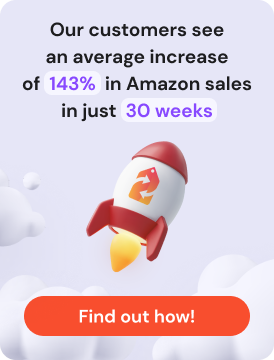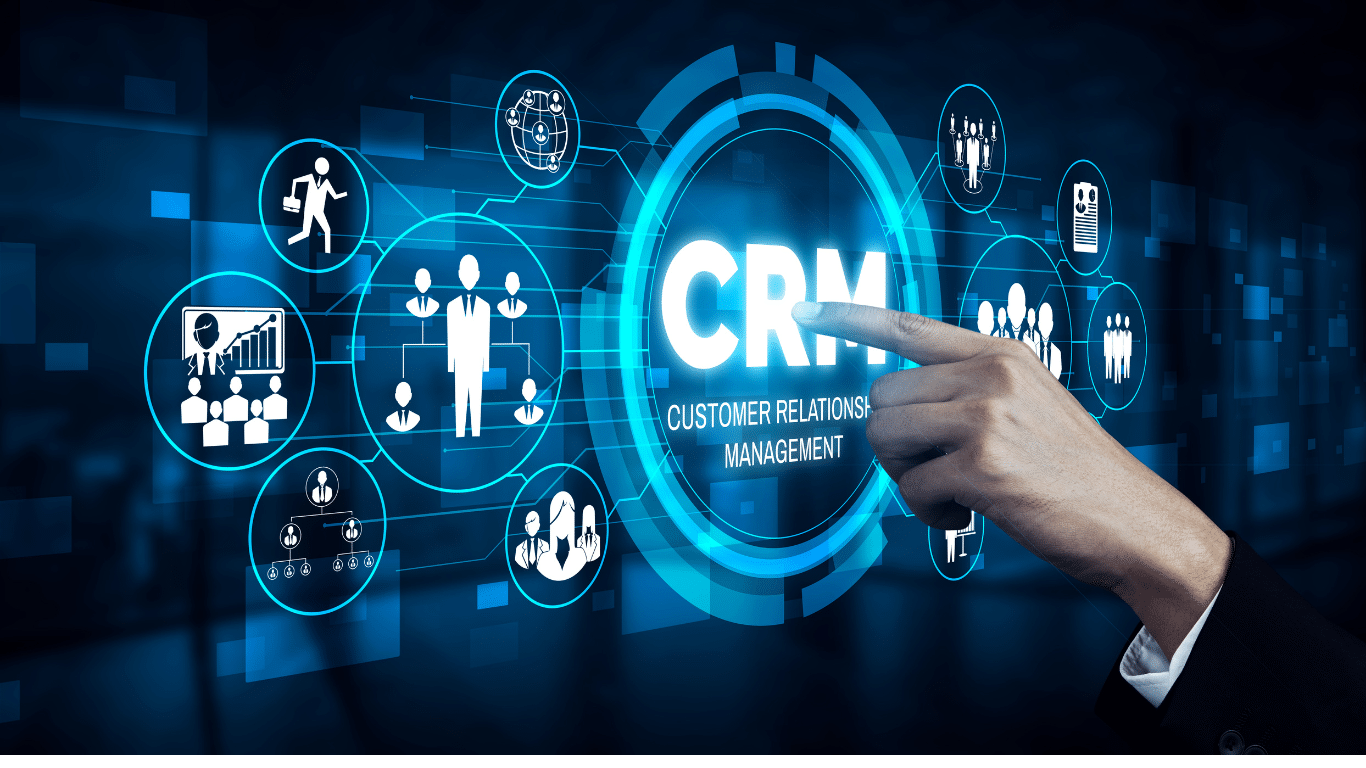Executive Summary
Repricing software can be the game-changer your marketplace business needs. This ultimate guide breaks down how repricers work, how to choose one, and how sellers are using them to increase sales by up to 40%. Learn automation strategies, algorithmic logic, and platform comparisons to gain a competitive edge and scale faster.
Introduction: Why Repricing Matters More Than Ever
The marketplace landscape has evolved dramatically. What worked in 2020—setting prices manually and checking competitors once a day—no longer cuts it in 2025. With millions of sellers competing for the same Buy Box on Amazon, Walmart, and eBay, static pricing strategies leave money on the table.
Consider this: Amazon’s Buy Box alone accounts for approximately 82% of all sales on the platform. If your pricing isn’t competitive within seconds of a competitor’s change, you’ve already lost the sale.
Modern repricing software solves this problem through automation, allowing sellers to respond to market conditions in real-time while maintaining healthy profit margins. Throughout this guide, we’ll explore how repricing works, what features matter most, and how to implement a strategy that can boost your sales by 40% or more.
What you’ll learn:
- How repricing software functions and why it’s essential
- Data-backed strategies for increasing conversions
- Platform-specific tactics for Amazon, Walmart, and eBay
- How to select and implement the right repricer for your business
- Common pitfalls and how to avoid them
What Is Repricing Software?
Repricing software is an automated tool that adjusts your product prices based on predefined rules, competitor pricing, and market conditions. Instead of manually checking competitor prices and updating your listings, repricing software does this automatically—often within minutes or even seconds. To understand the fundamentals better, check out our repricing basics guide.
Core Functions
At its foundation, a repricer monitors your competitors’ prices and adjusts your listings to maintain competitiveness while respecting your profit margin boundaries. When a competitor lowers their price, your repricer can automatically respond. When they raise prices, your repricer can follow suit to maximize profit.
Real-Time vs. Scheduled Repricing
Real-time repricing updates prices continuously as market conditions change, typically every 2-15 minutes. This approach is crucial for highly competitive categories where Buy Box ownership changes frequently.
Scheduled repricing updates prices at set intervals—hourly, daily, or custom schedules. This works well for sellers in less volatile categories or those with limited budgets who want to reduce API calls to marketplace platforms.
Three Types of Repricing Logic
Rule-Based Repricing follows conditional statements you create. For example: « If competitor price is below mine by $2, match their price minus $0.50, but never go below $15. » These rules give you complete control but require careful setup and ongoing management.
Algorithmic Repricing uses sophisticated algorithms that consider multiple factors beyond just competitor pricing—including sales velocity, inventory levels, seasonality, and historical performance. These systems make intelligent decisions based on your business goals, not just matching competitor prices.
AI-Powered Repricing leverages machine learning to predict optimal pricing based on vast datasets. These advanced systems learn from your sales patterns and market trends, continuously improving their pricing recommendations. According to research from McKinsey & Company, AI-driven pricing can increase margins by 2-5% while maintaining or improving sales volume. Learn more about the differences in our rule-based vs AI-based repricing comparison.
How Repricing Triggers Work
[Market Change Detected] → [Rules/Algorithm Evaluated] → [Price Adjusted] → [Listing Updated] → [Performance Monitored]
The cycle repeats continuously, ensuring your prices remain optimized 24/7 without manual intervention.
How Repricing Increases Sales (with Data)
The impact of automated repricing on sales performance is substantial and well-documented across marketplace platforms.
The Buy Box Effect
Winning the Buy Box isn’t just about visibility—it’s about conversion. Research consistently shows that products in the Buy Box position convert at 5-10x higher rates than products without it. Price is one of the most significant factors Amazon, Walmart, and other marketplaces consider when assigning Buy Box ownership. For a deeper dive into how the Buy Box works, read our article on winning the Amazon Buy Box in 2025.
A comprehensive study tracking 10,000+ sellers found that implementing automated repricing led to an average sales increase of 40% within the first three months. Some high-volume sellers reported gains exceeding 60% in competitive categories.
Real Performance Data
Case Study Highlights:
- Mid-sized Amazon seller (500 SKUs): Increased daily sales from $8,000 to $11,200 (40% growth) after implementing algorithmic repricing
- Multi-channel seller: Reduced time spent on pricing from 15 hours/week to zero, while maintaining 22% higher gross margins
- Private label brand: Achieved 94% Buy Box ownership, up from 67%, resulting in 35% revenue growth
You can see a real-world analysis in our repricer sales analysis case study.
Psychological Pricing Impact
Beyond algorithmic Buy Box factors, repricing enables sophisticated psychological pricing strategies. Ending prices with .99, .97, or .95 can increase conversions by 8-12% compared to rounded prices. Dynamic repricing software can maintain these pricing conventions automatically while adjusting to market conditions. Explore more tactics in our guide on psychological pricing with repricing software.
Cart Position Dynamics
On platforms like eBay and Walmart, your position in search results and featured placements directly correlates with price competitiveness. Sellers using repricing software maintain 23% better average search positions compared to manual pricers, according to data from Marketplace Pulse.
Performance Comparison:
| Metric | Manual Pricing | Automated Repricing | Improvement |
| Buy Box Win Rate | 58% | 89% | +53% |
| Average Response Time | 4-6 hours | 2-5 minutes | 99% faster |
| Price Optimization | Static | Dynamic | +40% sales |
| Time Investment | 15 hrs/week | 1 hr/week | 93% reduction |
Features to Look For in 2025
Not all repricing software is created equal. As the technology has matured, certain features have become essential while others remain nice-to-have additions. Explore the complete features of advanced repricing tools to understand what’s available. Here’s what matters most when evaluating repricing solutions this year.
Buy Box Targeting
Your repricer should have sophisticated Buy Box algorithms specifically designed for your target marketplace. Look for tools that don’t just undercut competitors but intelligently position your prices to win the Buy Box while maximizing profit. Understanding the Amazon Buy Box algorithm helps you appreciate why smart targeting matters. The best systems understand that the lowest price doesn’t always win—factors like seller rating, fulfillment method, and inventory levels all play a role.
Velocity-Based Pricing
Advanced repricers adjust prices based on how quickly (or slowly) products are selling. Fast-moving inventory might price more aggressively for volume, while slow movers could maintain higher margins. This dynamic approach prevents leaving money on the table with hot products while avoiding race-to-the-bottom scenarios with slower inventory.
Minimum and Maximum Guardrails
Never use a repricer without robust min/max price controls. These guardrails prevent catastrophic pricing errors and ensure you never sell below cost or price yourself out of the market. Learn how to use repricing to protect profit margins effectively. The best systems allow you to set these boundaries at the SKU level, category level, or across your entire catalog.
Multichannel Support
If you sell on multiple platforms—Amazon, Walmart, eBay, or others—unified repricing saves tremendous time and prevents pricing conflicts. Quality multichannel repricers understand platform-specific rules and can maintain appropriate price relationships across channels (crucial for avoiding policy violations around price parity). Discover strategies for multichannel selling success.
Reporting and Analytics Dashboard
Data-driven decisions require good data. Your repricer should provide clear dashboards showing:
- Win rate by product and category
- Profit margin trends
- Competitor pricing patterns
- Revenue impact of repricing actions
- Historical performance comparisons
Check out what’s possible with modern analytics and reporting tools.
Mobile Access and Alerts
Markets don’t sleep, and neither do your competitors. Mobile apps or robust SMS/email alerts let you monitor performance and respond to critical situations even when away from your desk. Look for systems that notify you of important events like prices hitting minimums, unexpected competitor behavior, or technical issues.
API Integration Capabilities
As your ecommerce operation grows, integration with other tools becomes crucial. Whether connecting to inventory management systems, ERP platforms, or business intelligence tools, API access ensures your repricer works seamlessly within your broader tech stack.
Marketplace-Specific Considerations
Each marketplace platform has unique characteristics that affect repricing strategy. Understanding these nuances ensures your repricer works optimally across all your sales channels.
Amazon: Buy Box Rotation and Seller Metrics
Amazon’s algorithm considers far more than just price. Seller performance metrics—including Order Defect Rate, cancellation rate, and late shipment rate—significantly impact Buy Box eligibility. Your repricer needs to account for your seller health when making pricing decisions.
Amazon also employs Buy Box rotation, occasionally giving secondary sellers time in the spotlight even when they’re not the lowest price. This means aggressive undercutting isn’t always the answer. Intelligent repricers recognize rotation patterns and adjust accordingly. Download our free How to Win the Amazon Buy Box eBook for comprehensive strategies.
Amazon-Specific Features to Prioritize:
- FBA vs. FBM pricing differentiation
- Sales rank velocity tracking
- Lightning Deal and promotion coordination
- Brand Registry consideration for brand owners
For sellers using Fulfillment by Amazon, understanding the pros and cons of Amazon FBA helps you optimize your repricing strategy accordingly.
Walmart: Pricing Parity and Algorithm Signals
Walmart’s marketplace has grown dramatically and now uses sophisticated algorithms that reward competitive pricing but punish extreme undercutting. The platform also monitors pricing across channels—if you’re significantly cheaper on Amazon, Walmart may suppress your listings.
Walmart’s algorithm particularly values consistent seller performance and competitive shipping speeds. Your repricing strategy should maintain balanced pricing across platforms while optimizing for Walmart’s Buy Box factors. Learn the differences with our Walmart repricer vs Amazon repricer comparison and explore advanced Walmart repricing strategies.
If you’re new to Walmart, check out the Walmart integration options available.
eBay: Fixed-Price vs. Auction Strategy
eBay presents unique repricing challenges because it supports both auction and fixed-price listings. For fixed-price items, repricing works similarly to other marketplaces, but auction listings require different logic entirely.
Quality eBay repricers understand when to use fixed pricing versus auctions based on category, competition level, and inventory velocity. They can also manage Best Offer automation, accepting or declining offers based on your margin requirements. For sellers considering platform alternatives, explore our guide to the best sites like eBay. Additionally, learn how to optimize your eBay Promoted Listings repricing strategy.
Platform Feature Comparison
| Feature | Amazon | Walmart | eBay |
| Buy Box Algorithm | Most sophisticated | Growing complexity | Limited (Best Match) |
| Repricing Frequency | Every 2-15 min | Every 15-30 min | Every 30-60 min |
| Price Parity Monitoring | Minimal | Strict | None |
| Fulfillment Impact | High (FBA premium) | Medium (WFS) | Low |
| Best Repricer Focus | Buy Box winning | Competitive balance | Search position |
How to Choose the Right Repricer for Your Business
Selecting repricing software isn’t one-size-fits-all. Your ideal solution depends on multiple factors specific to your business model and growth stage. To make an informed decision, you might want to calculate your ROI for repricing software first.
Inventory Size Considerations
Small Catalogs (1-100 SKUs): Basic rule-based repricers often suffice. You can create detailed rules for each product or small categories without overwhelming complexity. Budget-friendly options work well here since API costs and processing requirements remain minimal.
Medium Catalogs (100-1,000 SKUs): Algorithmic repricing becomes valuable at this scale. Managing individual rules for hundreds of products becomes impractical. Look for solutions offering category-level intelligence and performance-based automation.
Large Catalogs (1,000+ SKUs): AI-powered repricing is almost essential at enterprise scale. The system needs to learn patterns, identify opportunities, and make millions of pricing decisions without manual oversight. Advanced analytics and bulk management tools become critical.
Sales Volume Impact
High-volume sellers should prioritize repricers with faster refresh rates and minimal lag time. Even a 5-minute delay in responding to competitor price changes can cost significant revenue when you’re processing thousands of daily orders.
Low-to-medium volume sellers can often succeed with less aggressive repricing schedules, focusing instead on strategic positioning and margin protection.
Platform Coverage Requirements
Multi-channel sellers need repricers that truly understand each platform’s unique characteristics. Avoid tools that simply copy the same pricing logic across platforms—this creates compliance risks and misses optimization opportunities. Learn about effective multi-channel strategy beyond Amazon.
If you’re committed to a single marketplace, platform-specific repricers often outperform generalist solutions through deeper integration and more sophisticated understanding of that marketplace’s algorithm.
Budget Realities
Repricing software pricing varies dramatically, from $50/month for basic tools to $1,000+ monthly for enterprise solutions. Calculate your potential ROI conservatively—if a 40% sales increase is realistic for your catalog size, even expensive repricers pay for themselves quickly.
Consider total cost of ownership, including:
- Base subscription fees
- Per-SKU charges beyond included limits
- Marketplace API fees (some platforms charge for frequent repricing)
- Integration costs with other systems
- Training and setup time
Check current pricing options to compare different tiers.
Key Questions to Ask Before Committing
- How frequently does the software check competitor prices?
- What happens if the software malfunctions—are there safeguards?
- Can I test repricing logic before going live?
- What support is included, and what are response times?
- How does pricing scale as my catalog grows?
- Are there contract lock-ins or can I cancel anytime?
- What data exports and reporting are available?
Top Repricer Tools to Consider
The repricing software market has matured significantly, with several excellent options available. Here’s an overview of leading solutions, though you should conduct your own evaluation based on your specific needs. For a more detailed analysis, check out comparisons like our Feedvisor alternatives guide.
Popular Repricing Solutions
SellerSnap A sophisticated algorithmic repricer focused primarily on Amazon. Known for strong Buy Box optimization and game-theory pricing that considers competitor behavior patterns.
Pros: Advanced algorithms, excellent Buy Box win rates, strong analytics dashboard
Cons: Amazon-only, premium pricing, learning curve for new users
BQool Comprehensive repricing and feedback management platform for Amazon sellers. Offers both repricing and additional seller tools in one package.
Pros: All-in-one solution, reasonable pricing, good customer support
Cons: Interface can feel cluttered, repricing not as aggressive as pure-play competitors
RepricerExpress Multi-channel repricer supporting Amazon, eBay, and Walmart with simple rule-based and algorithmic options.
Pros: Multi-platform support, user-friendly interface, flexible pricing tiers
Cons: Algorithms less sophisticated than specialized competitors
Aura Repricer AI-powered solution with strong emphasis on protecting margins while maximizing sales velocity.
Pros: Machine learning capabilities, excellent margin protection, growing platform support
Cons: Higher price point, requires data history for optimal performance
Amazon Automate Pricing Amazon’s native repricing tool, available free to Professional sellers.
Pros: Free, direct Amazon integration, no third-party data sharing
Cons: Basic functionality only, limited customization, no multi-channel support
For sellers looking for comprehensive toolsets, explore our guide to the best tools and services for selling on Amazon.
Emerging Technologies
Watch for repricers incorporating real-time demand forecasting, cross-platform inventory optimization, and predictive competitor analysis. These next-generation features are beginning to appear in premium solutions and will likely become standard within 2-3 years. Stay informed about the benefits of repricing automation beyond just price changes.
Implementation Tips for Best Results
Having the right repricer is only half the battle. Implementation strategy determines whether you’ll achieve that 40% sales increase or struggle with the technology. Review various repricing strategies to find what works best for your business.
Set Pricing Rules Strategically
Start conservative and become more aggressive as you learn your repricer’s behavior. Initial rules should prioritize margin protection while you build confidence in the system.
Recommended Starting Framework:
- Set minimum prices at 15-20% above your true floor (costs plus minimal profit)
- Set maximum prices at 10-15% above current market averages
- Create separate rule sets for different product categories based on competition intensity
- Use slower repricing speeds initially (15-30 minute intervals)
As you gain experience, you can tighten these boundaries and increase repricing frequency. For more advanced tactics, see our guide on eCommerce pricing strategies.
Sync with Inventory Management
Your repricer should know your inventory levels and adjust strategy accordingly. Products with excess inventory might price more aggressively, while limited stock items could maintain premium pricing to maximize margins. Learn specific tactics for repricing strategies to clear excess inventory.
Integration between repricing and inventory systems prevents overselling during price drops and ensures you’re not racing to the bottom on your last unit of a popular product. FBA sellers should also read our tips to improve Amazon FBA inventory management.
Monitor Performance Weekly
Schedule regular performance reviews, especially during your first 90 days. Track these key metrics:
- Overall revenue and unit sales trends
- Buy Box win percentage by product
- Average margin by category
- Repricer response time and frequency
- Competitor behavior patterns
Most successful sellers conduct brief daily check-ins (5-10 minutes) and comprehensive weekly analyses (30-60 minutes) to spot issues early and identify optimization opportunities.
Combine with Advertising and SEO
Repricing doesn’t operate in a vacuum. Your competitive pricing makes advertising more efficient—you’ll see better ROAS (Return on Ad Spend) when your prices win the Buy Box. According to Wordstream, effective advertising combined with competitive pricing can increase conversion rates by up to 50%.
Compare the effectiveness in our article on Amazon PPC vs repricing for Buy Box impact. Similarly, optimized product listings and strong reviews multiply the impact of competitive pricing. Check out our Amazon advertising tools guide for complementary strategies.
Think of repricing as one component in your marketplace success framework. Sellers who coordinate repricing with advertising, inventory planning, and listing optimization see compounding benefits that far exceed isolated improvements.
Test and Iterate
A/B testing isn’t just for advertising. Try different repricing strategies on comparable products or time periods. Test aggressive versus conservative approaches, rule-based versus algorithmic logic, and different min/max boundaries.
Document what works for different product categories. Electronics might respond well to aggressive repricing, while premium home goods maintain better margins with moderate strategies. For seasonal sellers, review our Prime Day repricing strategy guide for event-specific tactics.
Common Mistakes to Avoid
Even with excellent software, certain mistakes can undermine your repricing success or even damage your business.
Setting Overly Aggressive Min/Max Rules
The temptation to « win at all costs » leads many sellers to set minimums barely above cost. This works until a competitor makes a pricing error or a race-to-the-bottom begins in your category. Always maintain meaningful margin buffers—at least 15-20% above your true break-even point.
Similarly, maximums set too high cause you to miss sales opportunities when the market softens. Your repricer can’t work magic if your price ceilings are consistently above market reality.
Not Testing Repricer Logic
Going live without testing is like deploying untested code to production. Use your repricer’s sandbox or testing mode to verify rules work as expected. Start with a small subset of products before rolling out across your entire catalog.
Watch for unexpected interactions between rules—sometimes multiple conditions trigger simultaneously, producing unintended pricing results.
Ignoring Non-Price Factors
Price isn’t everything, though it’s easy to obsess over it with repricing software. Amazon’s algorithm considers seller performance, fulfillment method, shipping speed, and customer reviews. Learn how customer reviews impact Amazon sales and discover tips to get more Amazon reviews.
Walmart evaluates delivery timeframes and seller ratings. eBay rewards strong feedback and item descriptions.
A repricer can’t overcome poor seller metrics, slow shipping, or bad reviews. Address these fundamentals first, then let repricing amplify your competitive advantages.
Forgetting About Seasonality
Many sellers set repricing rules and forget them, but market dynamics shift seasonally. Products might require aggressive pricing during slow periods and can maintain premium prices during peak demand seasons.
Build seasonal awareness into your repricing strategy. Review and adjust min/max boundaries quarterly at minimum, and consider creating season-specific rule sets for products with pronounced seasonal demand patterns.
Ignoring Competitor Types
Not all competitors are equal. Undercutting a seller with 98% positive feedback and FBA fulfillment requires different strategy than competing with a new merchant-fulfilled seller. Advanced repricers can differentiate, but you need to configure them properly.
Consider creating rules that respond differently based on competitor characteristics—more aggressive against weak competitors, more strategic against established sellers.
Over-Relying on Automation
Repricing software is powerful but not infallible. Regular human oversight catches anomalies, identifies market shifts, and adjusts strategy as your business evolves. Schedule time for active management rather than treating repricing as « set and forget. »
The most successful sellers view repricing as a tool that enhances their expertise, not replaces it. Understand the difference between repricer and manual pricing to appreciate where each approach excels.
Conclusion: Your Path to 40% Growth
Repricing software represents one of the highest-ROI investments available to marketplace sellers. The data is clear: automated, intelligent repricing increases sales by an average of 40% while reducing time spent on pricing management by over 90%.
Key Takeaways:
The marketplace environment in 2025 demands automated repricing. Manual pricing simply cannot compete with sellers using sophisticated algorithms that respond to market changes in real-time. Every hour you delay implementing repricing is an hour your competitors are capturing sales you could have won.
Choosing the right repricer matters, but taking action matters more. Start with a solution appropriate for your current scale and sophistication level. You can always upgrade as your business grows and you better understand your needs.
Focus on implementation quality over perfection. Conservative rules that you monitor and adjust weekly outperform aggressive rules set and forgotten. Use your first 90 days as a learning period, tracking performance closely and optimizing your approach.
Remember that repricing amplifies your existing competitive advantages. If your listings are poor, your fulfillment slow, or your seller ratings weak, fix those issues first. Repricing then multiplies the value of those improvements. For comprehensive guidance on building your Amazon business, check out our Amazon selling tips.
Your Next Steps:
- Audit your current pricing process and calculate time spent on manual repricing
- Estimate potential revenue impact using conservative assumptions (20-30% increase)
- Research 2-3 repricers that match your marketplace, catalog size, and budget
- Sign up for free trials and test with a small product subset
- Implement the winner with conservative rules and aggressive monitoring
- Optimize based on 30-60 days of performance data
The 40% sales increase isn’t guaranteed for everyone, but it’s achievable for most marketplace sellers who implement repricing thoughtfully and monitor performance actively. Your competitors are already using these tools—the question isn’t whether to adopt repricing, but when.
For sellers operating internationally, explore Amazon Europe repricing strategies to maximize your global presence.
Ready to get started? Visit Repricer.com to explore our solution, or if you’re looking to expand your business model, consider our guide on direct-to-consumer strategy for Amazon sellers.
FAQ
Is repricing software worth it?
For most marketplace sellers, yes—absolutely. If you’re selling on competitive platforms like Amazon, Walmart, or eBay, repricing software typically pays for itself many times over through increased sales and time savings. Sellers consistently report 30-40% sales increases after implementation, while reducing pricing management time from hours daily to minutes weekly. The investment makes sense for virtually any seller with more than 20-30 active SKUs. Calculate your specific scenario with our ROI calculator guide.
Can I lose profits with a repricer?
Yes, if configured incorrectly. This is why minimum price guardrails are essential—they prevent your repricer from selling below your desired margin threshold. Always set minimums at least 15-20% above your true break-even point to account for unexpected costs and marketplace fees. With proper configuration and regular monitoring, repricers actually protect margins better than manual pricing by preventing emotional decisions and ensuring consistent profitability rules. Learn more about protecting profit margins with repricing.
Do I need a repricer if I only sell on Amazon?
If you’re competing for the Buy Box on Amazon, repricing software becomes almost essential as you scale beyond a handful of products. The Buy Box algorithm considers price heavily, and competitor prices change constantly throughout the day. Manual sellers simply cannot respond quickly enough to maximize their Buy Box win rate. Even single-platform sellers see the 40% sales increase statistic apply to their businesses. Understand more about the Buy Box’s impact beyond just sales.
How often does repricing occur?
This varies by software and your settings. Real-time repricers adjust prices every 2-15 minutes in response to market changes. Scheduled repricers might update hourly, several times daily, or once per day. More frequent repricing generally produces better results in competitive categories but costs more in marketplace API fees and software subscriptions. Most sellers find 5-15 minute repricing intervals optimal for balancing responsiveness with cost.
What’s the difference between rule-based and AI repricing?
Rule-based repricing follows explicit conditional logic you create, such as « match the lowest price minus $0.50. » You control every decision, but this requires extensive setup and ongoing management. AI repricing uses machine learning to determine optimal prices based on vast datasets including your sales history, competitor behavior patterns, market trends, and demand signals. AI systems learn and improve over time, making increasingly sophisticated decisions without constant rule adjustments. Rule-based works well for smaller catalogs, while AI shines at scale—typically 500+ SKUs where human rule management becomes impractical. For an in-depth explanation of different repricing strategies, read our detailed rule-based vs AI-based software comparison.





